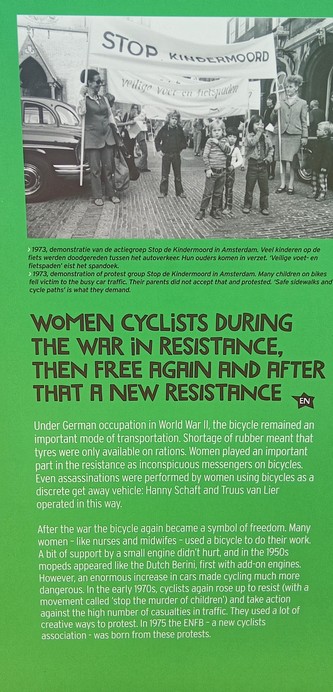Zeitpunkt Nutzer Delta Tröts TNR Titel Version maxTL Di 13.08.2024 00:00:08 11.966 +1 1.046.706 87,5 Mastodon.green 4.2.10 500 Mo 12.08.2024 00:00:00 11.965 -1 1.045.498 87,4 Mastodon.green 4.2.10 500 So 11.08.2024 00:00:10 11.966 0 1.044.390 87,3 Mastodon.green 4.2.10 500 Sa 10.08.2024 00:01:17 11.966 -1 1.043.309 87,2 Mastodon.green 4.2.10 500 Fr 09.08.2024 00:01:09 11.967 +1 1.042.244 87,1 Mastodon.green 4.2.10 500 Do 08.08.2024 00:01:21 11.966 +1 1.041.281 87,0 Mastodon.green 4.2.10 500 Mi 07.08.2024 00:00:00 11.965 +5 1.040.101 86,9 Mastodon.green 4.2.10 500 Di 06.08.2024 00:01:08 11.960 +1 1.039.248 86,9 Mastodon.green 4.2.10 500 Mo 05.08.2024 00:00:45 11.959 -1 1.038.268 86,8 Mastodon.green 4.2.10 500 So 04.08.2024 00:01:08 11.960 0 1.037.299 86,7 Mastodon.green 4.2.10 500
Patrick (@MrPDaniel) · 11/2022 · Tröts: 1.771 · Folger: 221
Di 13.08.2024 10:13
"Even“
#BikeTooter

A photo of part of a temporary canal-side information board about women and cycling, installed as part of the Tour de France Femmes 2024. It reads: WOMEN CYCLISTS DURING THE WAR IN RESISTANCE, THEN FREE AGAIN AND AFTER THAT A NEW RESISTANCE Under German occupation in World War II, the bicycle remained an important mode of transportation. Shortage of rubber meant that tyres were only available on rations. Women played an important part in the resistance as inconspicuous messengers on bicycles. Even assassinations were performed by women using bicycles as a discrete get away vehicle: Hanny Schaft and Truus van Lier operated in this way. After the war the bicycle again became a symbol of freedom. Many women - like nurses and midwifes - used a bicycle to do their work. A bit of support by a small engine didn't hurt, and in the 1950s mopeds appeared like the Dutch Berini, first with add-on engines. However, an enormous increase in cars made cycling much more dangerous. In the early 1970s, cyclists again rose up to resist (with a movement called 'stop the murder of children') and take action against the high number of casualties in traffic. They used a lot of creative ways to protest. In 1975 the ENFB - a new cyclists association - was born from these protests.
[Öffentlich] Antw.: 0 Wtrl.: 0 Fav.: 0 · via Tusky